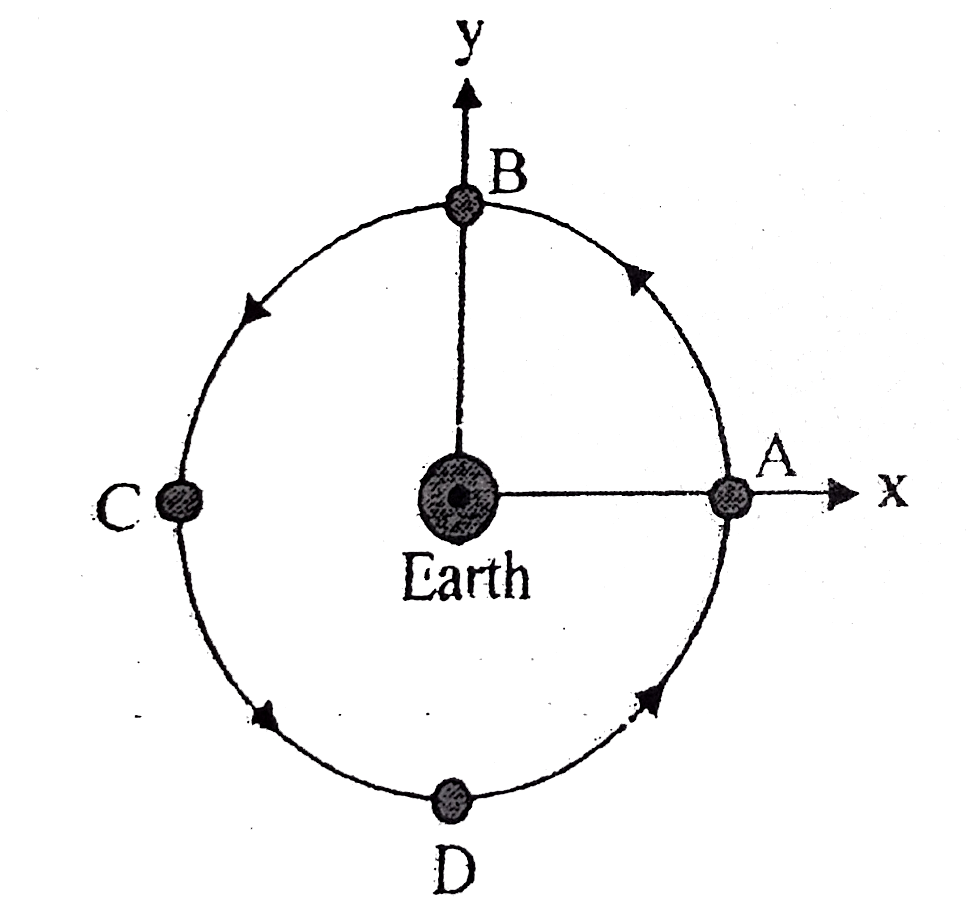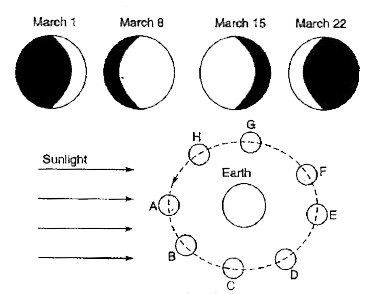Suppose Moon's orbital motion around the earth is suddenly stopped. Making use of Kepler's third law find the time the moon shell take to fall on to the earth?
The correct Answer is:Approx days
Step by step video, text & image solution for Suppose Moon's orbital motion around the earth is suddenly stopped. Making use of Kepler's third law find the time the moon shell take to fall on to the earth? by Physics experts to help you in doubts & scoring excellent marks in Class 11 exams.
Updated on:21/07/2023Topper's Solved these Questions
- GRAVITATIONBOOK - PHYSICS GALAXY - ASHISH ARORACHAPTER - GRAVITATIONEXERCISE - Advance MCQs
17 Videos
- FLUID MECHANICSBOOK - PHYSICS GALAXY - ASHISH ARORACHAPTER - FLUID MECHANICSEXERCISE - Unsolved Numerical Problems
86 Videos
- KINEMATICSBOOK - PHYSICS GALAXY - ASHISH ARORACHAPTER - KINEMATICSEXERCISE - Unsolved Numerical Pro.
83 Videos
Similar Questions
Knowledge Check
An artificial satellite revolves around the earth in circular orbit of radius r with time period T. The satellite is made to stop in the orbit which makes it fall onto the earth. Time of fall of the satellite onto the earth is given by
A√3T6B√28TCT√3D√23TπRam and Shyam are two students of ACME couse. One day after the test, they start discussing about the motion of the moon around the earth. The moon is known to take 27 days in competing a circular orbit.
 In the figure, the moon moves counterclockwise (ABCD) around the earth. Ram asks Shyam : "What is the direction of the impulse of gravitational force due to earth on moon for one half of an orbit, starting at C and ending at A"?A+xB+yC−xD−y
In the figure, the moon moves counterclockwise (ABCD) around the earth. Ram asks Shyam : "What is the direction of the impulse of gravitational force due to earth on moon for one half of an orbit, starting at C and ending at A"?A+xB+yC−xD−yRam and Shyam are two students of ACME couse. One day after the test, they start discussing about the motion of the moon around the earth. The moon is known to take 27 days in competing a circular orbit.
 In the figure, the moon moves counterclockwise (ABCD) around the earth. Shyam asks Ram : "What is the direction of the moon's average velocity for one quarter of an orbit, starting at C and ending at D "?A45∘ above +x (toward+y)B45∘ below +x (toward-y)C45∘ above −x (toward1y)D45∘ below −x (toward - y)
In the figure, the moon moves counterclockwise (ABCD) around the earth. Shyam asks Ram : "What is the direction of the moon's average velocity for one quarter of an orbit, starting at C and ending at D "?A45∘ above +x (toward+y)B45∘ below +x (toward-y)C45∘ above −x (toward1y)D45∘ below −x (toward - y)
Find the mass of the Earth knowing the orbital period and the radius of the Moon.
View SolutionAn artificial satellite is moving in a circular orbit around the earth with a speed equal to half the magnitude of escape velocity from the earth.
(i) Determine the height of the satellite above the earth's surface.
(ii) If the satellite is stopped suddenly in its orbit and allowed to fall freely onto the earth, find the speed with which it hits the surface of the earth.
View SolutionThe sketches show the phases of the Moon one week apart. The diagram shows the Moon's orbit around the Earth. Use the diagram and the sketches to answer the questions below:

How much of the sunlit part of the Moon was visible from Earth on March 8?
View SolutionThe angle subtended by the moon's diameter at a point on the earth is about 0.50∘ . Use this and the fact that the moon is about 384000km away to find the approximate diameter of the moon .

View SolutionRam and Shyam are two students of ACME couse. One day after the test, they start discussing about the motion of the moon around the earth. The moon is known to take 27 days in competing a circular orbit.
 In the figure, the moon moves counterclockwise (ABCD) around the earth. Ram asks Shyam : "What is the direction of the moon's instantaneous velocity at point D"?
In the figure, the moon moves counterclockwise (ABCD) around the earth. Ram asks Shyam : "What is the direction of the moon's instantaneous velocity at point D"?
View Solution
